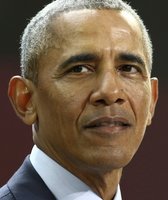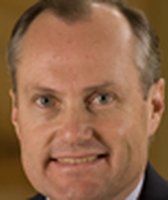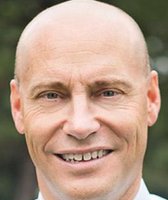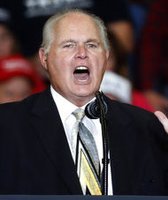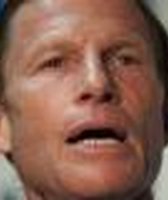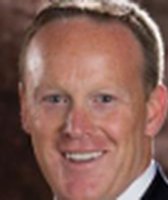Stand up for the facts!
Our only agenda is to publish the truth so you can be an informed participant in democracy.
We need your help.
I would like to contribute
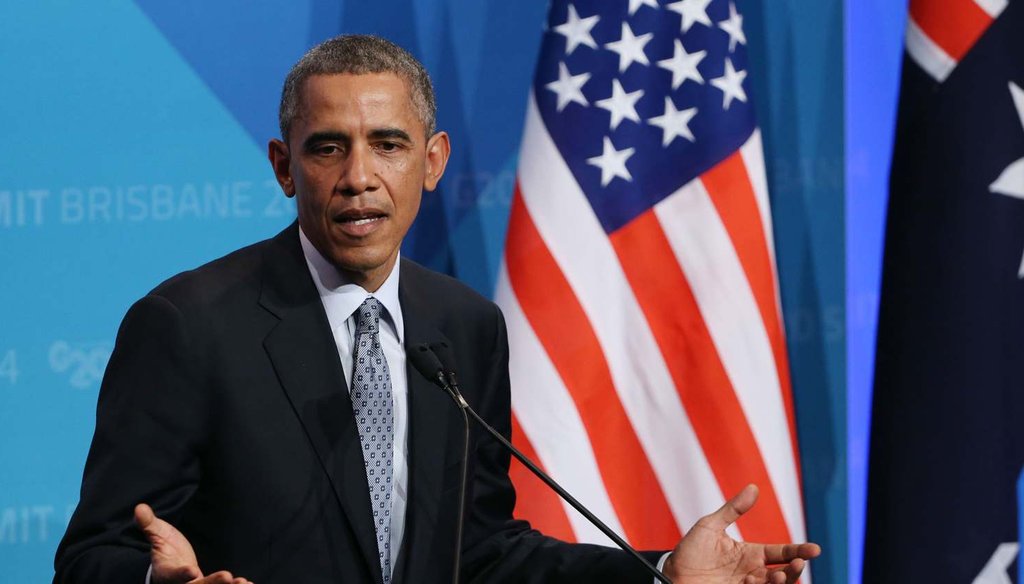
President Barack Obama touted the United States' economic recovery at a press conference following the G20 summit in Brisbane, Australia Nov. 16. Photo credit: AP
Obama: U.S. has put more people 'back to work' than all other advanced economies combined
By key measures, America’s labor market has crept back to pre-recession levels, leading President Barack Obama to repeat a talking point in recent days -- that the American economy has outperformed that of other advanced countries.
On Nov. 16, 2014, Obama spoke with reporters in Brisbane, Australia, following the ninth G20 summit -- a gathering of leaders from 20 of the world’s major economies. The G20 summit followed a high-profile tour to meet leaders of major Asian countries.
Obama said the gatherings "came against the backdrop of America’s renewed economic strength."
"The United States is in the longest stretch of uninterrupted private-sector job growth in its history," he said. "Over the last few years, we’ve put more people back to work than all the other advanced economies combined."
We previously rated a similar statement by Obama, giving him a Half True for the claim that "we've created more jobs in the United States than every other advanced economy combined since I came into office."
The new version Obama offered at the G20 summit was slightly better, since it uses a more flexible time frame -- "over the last few years" -- rather than the more specific "since I came into office." If you start counting the day he came into office -- a period when the United States economy was still several months away from hitting rock bottom -- the statement is incorrect.
At the G20, Obama changed his language from "created more jobs" to "we’ve put more people back to work." This makes it sound as if the specific people put out of work by the recession (or at least, the general types of people who lost their jobs in the recession) are now working again.
It would seem like the evidence for this is equivocal at best.
How does the U.S. compare to the other advanced economies?
First, we’ll recap what we found out about job creation in advanced economies in our previous fact-check, using International Monetary Fund data. The IMF classifies 36 countries as "advanced economies" and seven of those as "major advanced economies." We looked at total average annual employment from 2009 -- Obama’s first year in office -- through 2014. (This counts the number of payroll positions, meaning one person who works two jobs would be counted twice.)
Country or group
2009 employment
2014 employment, estimated
Absolute growth
Percent growth
United States
139.9 million
145.9 million
5.98 million
4.27 percent
IMF: 36 advanced economies (except U.S.)
326.5 million
332.8 million
6.28 million
1.92 percent
IMF: G7 major advanced economies (except U.S.)
196.1 million
200.8 million
4.72 million
2.41 percent
(For the full data, check out this Google spreadsheet.)
According to the IMF, then, the net number of people employed in the United States has grown by just shy of 6 million people. (The Bureau of Labor Statistics puts the figure at about 5.7 million.) Obama had said this number was more than all advanced economies combined, but that’s not the case -- the 35 advanced economies outside of the United States expanded by 6.28 million.
That does make it fairly close, and it’s clearly more than what happened in the smaller group of other G7 countries (the United States, Canada, France, Germany, Italy, Japan, the United Kingdom).
Still, the United States is the most populous of the advanced economies by far -- it has more than twice the population of Japan, which is the next most populous advanced economy. (China, Russia and India are not considered advanced economies.) So it’s logical that there will, in general, be more employment growth in absolute numbers compared to smaller nations.
Looking at the percentage growth rate instead of the absolute number of jobs helps to account for the population differences among these advanced nations. And by this measurement, the United States is not on top.
The United States’ percentage growth rate is lower than quite a few nations on this list, including: Australia, Austria, Canada, Estonia, Germany, Iceland, Israel, South Korea, Luxembourg, Malta, New Zealand, Norway, Singapore, Sweden, Switzerland and the United Kingdom. The country with the highest job growth rate was Singapore, with a rate of more than 18 percent.
Is the U.S. putting 'more people back to work'?
So if you look at net job creation, the White House claim is close, but not exact. What about if you change the wording to putting "more people back to work," as Obama said?
To support its claim, the White House cited an internal analysis -- one we weren’t able to access for independent verification.
The White House press office said the analysis used IMF data for the 36 advanced economies.
They told PolitiFact that the analysis "finds that 14.9 million people have returned to work in advanced economies since the beginning of 2010. Just over half—or 7.5 million—are in the United States. In other words, the number of people put back to work in the United States exceeds the net total for all other advanced economies combined (7.4 million)."
The White House said it’s notable that the United States accounts for the majority of these jobs since the U.S. population only accounts for about 31 percent of the population in advanced economies.
The White House added that within the narrower group of G7 nations the U.S. share "vastly exceeds the rest of the G7 (7.5 million vs. 4.6 million)."
However, the White House is using net employment gain, which doesn’t necessarily refer to people who became unemployed and went back to work -- the clearest definition of putting people "back to work," as Obama said. It’s possible that it could include people entering the workforce for the first time.
We were unable to find other research to corroborate Obama’s claim.
On the question of putting people back to work, we found that the Obama administration does have some data on its side. Statistics for the long-term unemployed have fallen consistently from their recession peak, both measured by the number of long-term unemployed Americans and the median duration of unemployment.
The following Bureau of Labor Statistics chart shows the median duration of unemployment, in weeks, since January 2009.
Still, the median length of unemployment is 13.7 weeks now, which is higher than it was in January 2009 (10.7 weeks).
More importantly, the labor force participation rate -- that is, the percentage of the civilian, noninstitutionalized population that is either working or looking actively for work -- has fallen consistently since Obama took office, from 65.7 to 62.8 percent.
This graph from the U.S. Bureau of Labor Statistics shows the falling rate of labor participation since January 2009, when Obama took office.
If these two data points sound paradoxical, they’re not. On the one hand, among the pool of people still looking for work, fewer have been looking for more than 27 weeks. On the other hand, that pool of people looking for work has shrunk, because many workers have simply dropped out of the labor market, rather than finding a job.
The idea that long-term unemployed Americans are increasingly leaving the labor force is supported by an analysis of Bureau of Labor Statistics data by FiveThirtyEight.com’s Ben Casselman. The data led him to conclude that "the share of the long-term jobless who are giving up their job searches has been rising steadily, even as the job-finding rate has remained largely flat."
This puts a damper on the notion, stated by Obama, that "we’ve put more people back to work" in recent years.
Tara Sinclair, a George Washington University economist, added a word of caution.
She noted that presidents are far from the only factor in economic growth, so it would be unrealistic for Obama to claim too much credit for these numbers. Indeed, the United States hemorrhaged jobs in the last months of 2008 and the first few months of 2009 -- meaning there was a lot of room to grow.
"Is it a good thing to just put people back to work?" Sinclair said. "This mostly means we had a terribly bad recession and have finally recovered from it. That's not necessarily something to consider a policy triumph."
Our ruling
Obama said, "Over the last few years, we’ve put more people back to work than all the other advanced economies combined."
From publicly available data, we know that since 2009, the United States has created roughly the same number of jobs as the 35 other advanced economies combined, and more than the other six biggest economies. However, it’s not as clear cut that this recovery involves putting "more people back to work," as Obama suggests. The labor force participation rate has consistently declined during this period, suggesting that more and more unemployed Americans are dropping out of the workforce, rather than taking new jobs.
On balance, we rate Obama's claim Half True.
Our Sources
White House, Obama remarks transcript, Nov. 16, 2014
PolitiFact, "Barack Obama says U.S. has recovered from recession better than almost every advanced country," July 23, 2014
PolitiFact, "Obama: Since 2009, U.S. has created more jobs than 'every other advanced economy combined,'" Nov. 9, 2014
White House, "Economic Report of the President," March 2014
IMF, World Economic Outlook database, accessed July 22, 2014
New York Times, "Many Rival Nations Surge Past the U.S. in Adding New Jobs," June 7, 2013
FiveThirtyEight, "No, the Long-Term Jobless Aren’t ‘Catching a Break,’" June 27, 2014
Bureau of Labor Statistics, various labor data, accessed Nov. 17, 2014
Email interview with Tara Sinclair, George Washington University economist, Nov. 17, 2014
Email interview with Jeffrey Frankel, Harvard University economist, Nov. 9, 2014
Email interview with White House spokeswoman Jennifer Friedman, Nov. 9, 2014
Email interview with White House spokeswoman Brandi Hoffine, Nov. 17, 2014
Browse the Truth-O-Meter
More by Lauren Carroll
Obama: U.S. has put more people 'back to work' than all other advanced economies combined
Support independent fact-checking.
Become a member!
In a world of wild talk and fake news, help us stand up for the facts.

